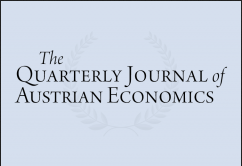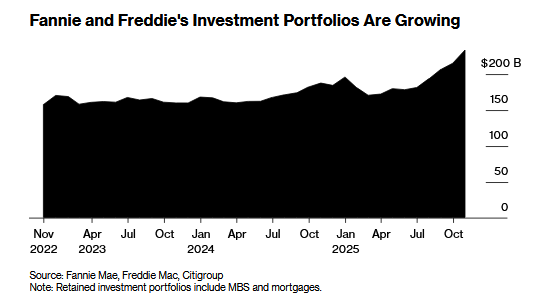The Austrian school of economics has been all but left by the wayside in economics (e.g., Backhouse 2000). This fate, shared with all “heterodox” approaches that do not fully comply with mainstream dogma, means Austrian theory is at best discounted by other economists. More often, and typically, it is forgotten and a relic of the past.
At the same time, Austrian economics is the only school of economic thought that is well represented in the study of entrepreneurship (e.g., Dahlqvist and Wiklund 2012; Korsgaard, et al. 2016; Packard and Bylund 2018).1 Austrian theories, concepts, and perspectives on entrepreneurship make up an important part of what is modern entrepreneurship theory (Klein and Bylund 2014).
Although the former is as unfortunate as the latter is exciting, it is not impossible that they have the same cause. Austrian theory, focusing on understanding (not predicting) the dynamics of and emergent phenomena in the market process, conceived as an entrepreneurially driven (Mises [1949] 1998), production-based (Böhm-Bawerk [1889] 1959) discovery procedure (Hayek 1978), is undoubtedly well suited as a framework for studying all aspects of entrepreneurship as uncertainty-bearing value creation (Hastings, D’Andrea, and Bylund 2019). Mainstream economics, seeking to mimic the reliability of empirical physics, has taken great pains in attempting to exclude the dynamism of the market process from its theoretical models (e.g., Baumol 1968). As a result, modern economics is barren and generally lacks insight into what gives life to what older generations of economists sometimes referred to as the “economic organism” (Bylund and Bylund, forthcoming).
Economics without entrepreneurship is a twentieth-century idea. Joseph A. Schumpeter, schooled in the Austrian tradition but later enamored by the promise of formalized (if not mathematized) Walrasian analysis, early recognized this core flaw of the modern economic approach. In Capitalism, Socialism and Democracy, Schumpeter identified the free enterprise system’s constant regeneration through “industrial mutation…that incessantly revolutionizes the economic structure from within, incessantly destroying the old one, incessantly creating a new one” (1947, 83). This creative destruction, he noted, is capitalism’s essence, which modern economics has all but expunged—yet is impotent without. Writes Schumpeter:
a theoretical construction which neglects this essential element of the case [entrepreneurship] neglects all that is most typically capitalist about it; even if correct in logic as well as in fact, it is like Hamlet without the Danish prince. (Schumpeter 1947, 86)
In contrast, entrepreneurship scholarship focuses on the prince along with the royal family but tends to neglect the remainder of the play and its characters. It should therefore be unsurprising that Austrian economic theory, in which the entrepreneur is the main character in the full play, is a valuable framework and inspiration. Indeed, the entrepreneurial opportunity, a core concept in modern entrepreneurship theory (Venkataraman 1997; Shane and Venkataraman 2000; Shane 2003; see also Dempster’s article in this issue), was originally formulated based on the entrepreneurship theories of Schumpeter ([1911] 1934) and Kirzner (1973). More recently, as the opportunity construct has become increasingly questioned (e.g., Foss and Klein 2020), the judgment-based approach (Klein 2008; McMullen 2015; Foss, Klein and Bjørnskov 2019), based in part on the entrepreneurship discussions of Mises ([1949] 1998) and Lachmann ([1956] 1978), has emerged as an important alternative.
It is safe to say, then, that Austrian economics remains an important perspective in the modern study of entrepreneurship. Yet while entrepreneurship scholars often take inspiration or even borrow from Austrian economics, the reverse is scarcely true. Even so, there is reason to believe both sides would benefit from more interaction and collaboration (for a recent but limited example, see Elert and Henrekson 2019). Austrian theory was largely developed prior to and beyond the reach of, and has therefore been unaffected by developments in, the entrepreneurship literature. This means that new findings and theoretical advances, as well as novel approaches and questions, that could contribute to the further development of the Austrian corpus may remain undiscovered. Similarly, entrepreneurship theory, which to date includes a number of interesting perspectives but lacks a firm core set of assumptions or theories, could benefit from considering, incorporating, or even adopting Austrian theorizing more broadly—as a framework, structure, or theoretical basis.
The aim of this special issue is to facilitate a synergistic discussion between Austrian economists with an interest in entrepreneurship theory and entrepreneurship scholars with an interest in the Austrian approach. Although we could perhaps go much further, the goal here is merely to begin building a bridge between the fields by creating an initial exchange of ideas, perspectives, and approaches to benefit both “sides.” The articles published in this special double issue contribute to this interdisciplinary exchange of ideas. Although they have different starting points, different aims, and utilize different perspectives and methods, they all address research questions and use methods that make them of interest both for scholars in the Austrian tradition and in the academic study of entrepreneurship.
The first article, “Turning the Word Upside Down,” by Mark Thornton, addresses the historical origins of the term entrepreneur. Going back to the early eighteenth-century, Thornton argues that an entrepreneur was traditionally understood as a government contractor, or someone operating with a known, predetermined revenue but unknown future costs. As one would expect, these entrepreneurs were known for cutting corners and underdelivering, as they themselves would benefit from keeping costs down. But the meaning of the word was turned on its head thanks, largely, to the writings of one man: Richard Cantillon ([1755] 2010). With Cantillon’s masterful treatise, the entrepreneur was given the very opposite meaning, similar to how we would today view entrepreneurs: as someone who deals with known costs but unknown future revenue. Thornton traces the influence of Cantillon and how the term changed meaning in dictionaries, among leading econ- omists, and then in common usage.
Randall Westgren’s article, “Carl Menger’s Grundsätze as a Foundation for Contemporary Entrepreneurship Research,” revisits insights from the Austrian school’s founding with Carl Menger’s groundbreaking Principles of Economics ([1871] 2007). Westgren finds in Menger’s observation that value is subjective an important yet missing piece of the puzzle in entrepreneurship theory. Thus, by formalizing Menger’s hierarchy of needs, he creates a model of strategic entrepreneurship that fills this important gap and ties together insights from consumer behavior, marketing, and organizational psychology.
In “Austrian Economics and Organizational Entrepreneurship: A Typology,” Sara Elias with coauthors Todd Chiles, Qian Li, and Fernando D’Andrea develop a typology to assist organizational scholars in applying core Austrian insights. They develop four distinct perspectives—equilibration, punctuated equilibrium, disequilibration, and punctuated disequilibrium—that distinguish different strands of Austrian economics in relation to entrepreneurial production and change. The article provides useful background on how these perspectives differ with respect to ontological, epistemological, and methodological assumptions, and illustrates their applications in organizational research.
In the fourth article, “Finding the Entrepreneur-Promoter: A Praxeological Inquiry,” Per Bylund addresses the Misesian conception of the entrepreneur-promoter and offers a means to define this distinct type of entrepreneur praxeologically. Applying the imaginary construction developed in Problem of Production (Bylund 2016)—the “specialization deadlock”—he provides a theoretical distinction between entrepreneurship in general (the uncertainty-bearing function; Mises [1949] 1998) and the promoter as the driving force of the market. The promoter is then defined theoretically as the function of establishing specialized production beyond what the market’s existing division of labor supports. In other words, promoters implement productive innovations beyond the extent of the market.
Mark Packard’s “Autarkic Entrepreneurship” addresses a different dimension of Austrian entrepreneurship theory and attempts to break new ground in a different direction. He argues provocatively that the entrepreneurial function is not limited to the catallactic (exchange) economy but is also an important part in, and necessary to understand, the autarkic or do-it-yourself economy. Arguing that catallaxy and autarky, as alternative courses of action, are substitutes, complements, and even competitors, Packard extends Austrian economic theory into the realm of the personal economy.
In “Why (a Theory of) Opportunity Matters: Refining the Austrian View of Entrepreneurial Discovery,” Gregory Dempster adds to existing entrepreneurship theory by producing an argument in defense of the entrepreneurial opportunity concept. Retaining essential elements of Kirzner’s (1973) original theory, Dempster reinterprets opportunity as an intersubjective phenomenon that emerges from entrepreneurial discovery and judgment. The paper thereby, in the words of the author, “places opportunity back in the limelight as a central concept for understanding the causes and effects of entrepreneurship” (p. 429).
“Entrepreneurial Empowerment: You Are Only as Good as Your Employees,” by Desmond Ng, develops the concept of entrepreneurial empowerment to explain how entrepreneurs can overcome their venture’s internal Hayekian knowledge problem. Ng argues that entrepreneurial success can be explained not only by the entrepreneur’s original ideas but also (and, perhaps, more importantly) by their ability to inspire others within the organization. Specifically, by empowering employees to make use of their local and tacit knowledge, the entrepreneur can establish a discovery process within the firm in which employees’ unique knowledge can contribute to the vision and goals of the organization.
In the eighth article, “A Dynamic Model of Entrepreneurial Opportunity: Integrating Kirzner’s and Mises’s Approaches to Entrepreneurial Action,” Alexander McKelvie with coauthors Johan Wiklund, Jeffrey McMullen, and Almantas Palubinskas present two longitudinal case studies to inductively drive the argument that time is important in entrepreneurship. The authors argue that the passing of (objective or clock) time increases the likelihood of market data change, thus requiring entrepreneurs (and entrepreneurship theories) to adopt a dynamic temporal perspective in which opportunity beliefs are updated. With this important identification, they seek an integration of Kirzner’s alertness to opportunity and Mises’s focus on entrepreneurial action.
Daniel Leunbach and coauthors Ekaterina Bjørnåli and Truls Erikson present an empirical analysis of subjectivism on the interpersonal or group level. “A Subjectivist Approach to Team Entrepreneurship” studies the team dynamics in 124 high-tech start-ups and finds that positive internal and external team dynamics, as subjectively assessed by the entrepreneurs, contribute to the effectiveness of the team. Their study presents a first attempt to measure the effects predicted by the subjectivist approach to team entrepreneurship.
Finally, “Institutions and Entrepreneurship: Pushing the Boundaries,” by Scott Burns and Caleb Fuller, recognizes the central role that institutions play in both new institutional economics (NIE) and Austrian economics and suggests how the approaches complement each other. Focusing specifically on Austrian insights regarding subjectivism, entrepreneurship, and capital, the authors argue that there are gains from theoretical trade between the disciplines. Specifically, they find that the Austrian perspective can improve the NIE understanding of institutional evolution as well as contribute to explaining observable within-country variation in entrepreneurship and production.
Combined, these ten articles cover a broad set of issues and adopt a multitude of perspectives on both how Austrian economics can be used in entrepreneurship scholarship, how entrepreneurship scholarship can lean on Austrian economic theory for further refinements, and how entrepreneurship scholarship provides direction for further theorizing in Austrian economics. There are many reasons to be optimistic about research within this gap, which is perhaps better understood as a phenomenal, conceptual, and theoretical overlap, between the fields. But there are also differences that should be acknowledged. For example, Austrian economics is a deductive, theory-first framework that seeks truth rather than testable hypotheses. Although empirical research is important, it is not used as a means for theorizing but rather to illustrate and apply theory. Meanwhile, entrepreneurship research typically follows the standard model of research in which theory is used to generate testable hypotheses that, if supported, may eventually be incorporated into the larger corpus of scientific explanation. This suggests that entrepreneurship may be more open to borrowing from Austrian economics than the other way around, as history has already shown (Klein and Bylund 2014). But Austrian economics would still benefit greatly from seeing its concepts applied and subjected to empirical analysis (even though Austrians would refer to this task as history or thymology, not theory development [Mises (1957) 2007]).
The articles in this special issue attempt all of the aforementioned tasks. They thereby indicate directions for future research within Austrian economics, in entrepreneurship, and where the fields overlap. They also address directions for further expansion beyond the present boundaries of Austrian economics and entrepreneurship theory. This double issue includes articles that open new lines of thinking for Austrian economists with an interest in entrepreneurship as well as for entrepreneurship scholars with an interest in Austrian economics. These articles, each in its own way, are the building blocks needed to give shape to a bridge that facilitates new collaborations and exchanges—perhaps even friendships. Regardless of what may come of this special issue, scholars on both sides should find the bridge well worth traveling.
- 1. A similar argument can be made for related fields such as theory of the firm and strategy (e.g., Ioannides 2002; Jacobson 1992; Roberts and Eisenhardt 2003; Young, Smith, and Grimm 1996).
Tags: Featured,newsletter





























